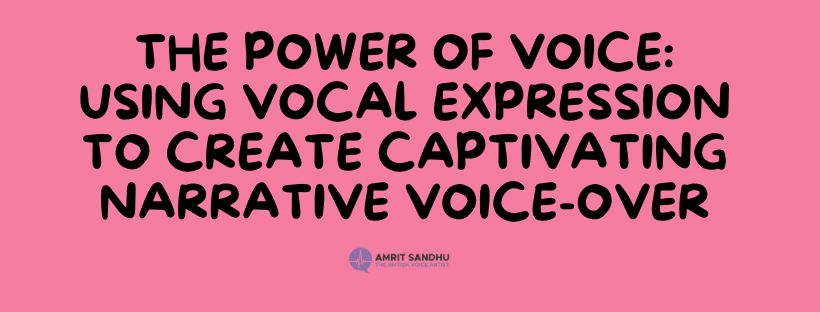Narrative voice-over is an essential storytelling component in the ever-evolving world of media and entertainment. It provides a special way to communicate complex stories in a variety of media, including TV, movies, video games, and ads. Vocal expressiveness is a powerful instrument that can transform a script into an engaging trip for listeners, and it is at the core of this art form. In this blog, we explore the subtleties of narrative voice-over and how using vocal expression to enhance storytelling may lead to amazing results.
Creating a Character and Ambience
Narrative voice-over provides a window into the thoughts and emotions of fictional characters, revealing their desires, fears, and motives. A talented voice actor can give each character a unique voice and personality, which will weave a complex web of relationships and interactions across the narrative.
A narrative’s tone and atmosphere are also greatly influenced by the way one speaks. The subtleties of vocal delivery can elicit a wide range of emotions and moods, enhancing the viewer’s experience, whether it’s the hushed whispers of a scary thriller or the lively banter of a romantic comedy.
Creating a Strong Emotional Bond
Creating a strong emotional bond with the listener is more important to effective narrative voice-over than simply reading lines. Voice actors can give characters and events life through timing, intonation, and tone, which captivates listeners and adds dimension to the story.
Think of the effect of an engaging narrator describing the terrifying events of a war-torn protagonist, or the impact of a kind, comforting voice guiding viewers through a documentary. These vocal performances are more powerful than words; they touch the audience viscerally and leave a lasting effect.
Improving The Dynamics of Storytelling
Beyond character characterization, voice expression adds to the overall dynamics of storytelling by effectively and precisely directing the listener through the story arc. Voice actors can generate suspense, develop tension, or deliver crucial moments with maximum impact by varying the tempo, volume, and emphasis.
Moreover, narrative voice-over requires precise timing; well-placed pauses and cadences give the speech depth and rhythm. These minute details enhance the storytelling experience by drawing the audience in and offering opportunities for reflection and suspense.
Accepting Advances in Technology
Technology has changed the narrative voice-over industry in recent years, providing unprecedented opportunities for creativity and innovation. Voice actors can now improve their performances with a wide range of tools and techniques, from motion capture and facial recognition to AI-driven speech synthesis.
The importance of the human aspect in narrative voice-over does not change, despite these technological advances. The ability of voice actors to evoke depth, emotion, and authenticity in a script is what makes it come to life, even while technology can expedite production procedures and improve audio quality.
Narrative voice-over—which possesses the potential to generate strong emotions and tell captivating stories—remains a captivating medium in the ever-changing world of entertainment and media. Voice actors possess the ability to create immersive narrative experiences that strongly connect with viewers and leave a lasting impression on the collective imagination by utilizing the power of their voices. Remembering the timeless power of the human voice and its ability to uplift, amuse, and affect us in ways that transcend words should be our focus as we push the boundaries of storytelling.




